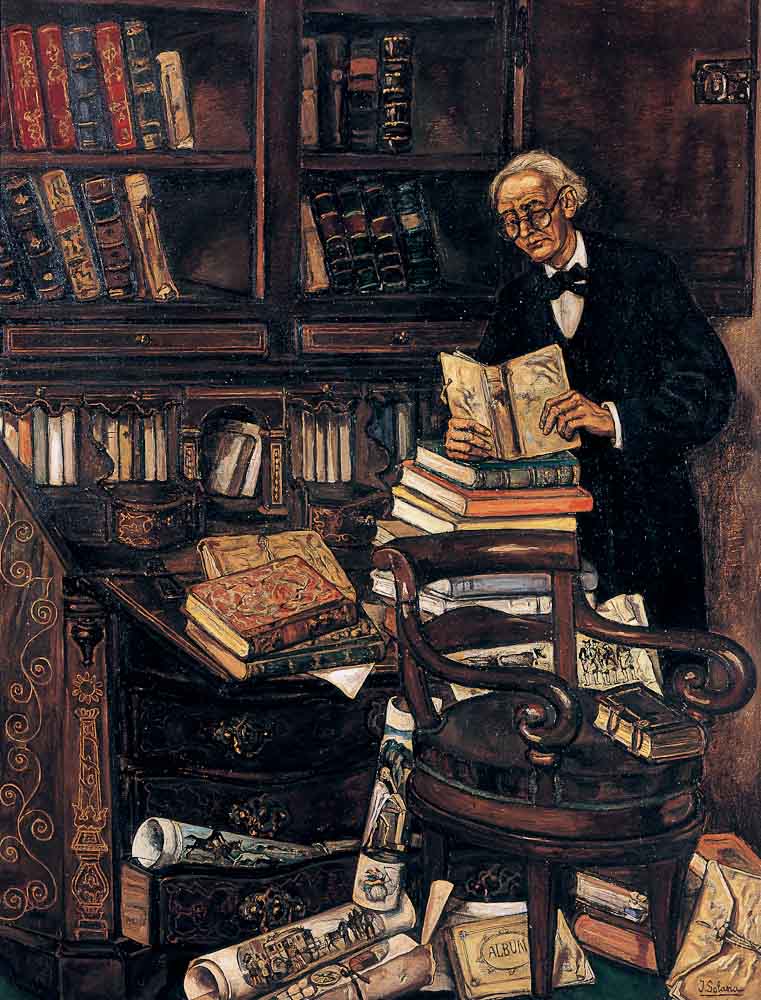
José Gutiérrez Solana (Madrid, 1886-1945)
The Bibliophile
circa 1933
WORK INFORMATION
Oil on canvas, 212 × 163 cm
OTHER INFORMATION
Signed in the lower right-hand corner: "J. Solana" Inscription on the reverse, on the stretcher: "José Solana / El bibliófilo"
In Solana’s portraits the artist drew a clear distinction between depictions of groups and of single figures. In the first type the sitters are presented as if remote from the scene and absorbed in their own thoughts, while in the second, as in this example, they are shown as solitary individuals who are always surrounded by objects that provide information about them, reflecting the artist’s effort to offer a psychological analysis.
In The Bibliophile of around 1933 Solana undoubtedly recreated the figure of his father, an intelligent man with a degree in medicine, a book lover, a great reader and the owner of a large library. The artist’s intention here was to pay tribute to his father for having introduced him to reading from an early age. As a consequence Solana seems to have enjoyed painting this work. He used his own furniture for the setting and books from his own library while the prints scattered on the floor point to his principal interests, depicting carriages, female bullfighters, horse races and even Death with his scythe.
For this rather symbolic representation of the bibliophile Solana used his brother Manuel as the model although the face does not seem to be his, to judge from surviving photographs. His efforts focused on conveying the idea of a generous spirited, gently mannered, elegantly dressed person who lived in his own world, absorbed in his reading. The artist allows us to enter into the sitter’s state of mind while also suggesting his own respect for this mature man and for his wisdom and experience.
The ochre tones of the composition, which are subtly gradated across the books on the background shelves, the precise rendering of the outlines through colour in order to define the forms and the use of light all contribute to the creation of a work of such
outstanding quality that the Ministry of Public Instruction awarded Solana First Prize in the National Portraiture Competition held in Madrid in 1933.
María José Salazar

